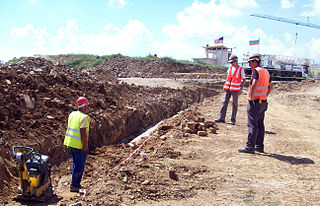Three Essential Safety Equipment In Construction

Construction can be defined as many things, from major professional operations to backyard home improvement projects, however, one thing remains constant in this business, and that is the need for safety.
Construction fatalities account for nearly 18 percent of work-related deaths in America every year.
Although your equipment may vary from job to job or site to site, these three things are absolute essentials for any construction activity.

No matter how simple or small the job, eye protection is essential to everyone either working on or even passing through a construction site.
Clear plastic that extends around your face, covering peripheral vision are the most highly recommended types to wear.
There are variations to suit every need, ranging from impenetrable to tinted materials.
Additionally, safety goggles can be purchased in a number of styles for maximum comfort, leaving no room for excuses when it comes to the protection of your eyes.
Expert Tip: Always look for the ANSI stamp of approval on goggles, and make sure they are a good comfortable fit. If they slide off, don’t offer ventilation, or are difficult to work with, they will not be properly utilized.
Safety glasses not bearing the ANSI seal may simply be inadequate and not up to industry recognized standards.
Often disregarded in favor of dexterity, hand protection is also paramount when it comes to construction safety. If you think about it, given the importance of hands for this profession, no worker should go a day without them.
Even a minor injury to the hands can lead to an inability to work or great discomfort in doing so. Industrial strength materials are a requirement of any pair of gloves, considering the nature of construction work and the hazards posed by such a hands-on job.
Expert Tip: When choosing which gloves to supply your construction team with, consider all factors involved from electrical conductivity to flexibility and durability.
Never buy bulk gloves at bargain prices simply because they are cheap; buy the types that suit each particular job and worker.
In many industrial and construction environments, it’s downright illegal to meander about without a hard hat, and there’s good reason for that.
Falling debris, lower than expected frames and beams, as well as other situations which can not be anticipated 100% of the time make navigating through a site particularly hazardous to the human head.
Many serious injuries are sustained that could have otherwise been avoided with the wearing of a properly fitting hard hat.
Experts advise all construction companies (even one man operations) to record the date a hard hat is first commissioned and to regularly replace them, in order to ensure that they are functioning at optimum and providing maximum protection.
Expert Tip: When performing an inspection of a hard hat, examine both the shell and the suspension. Even if the exterior does not show signs of wear, the suspension may have been compromised, which will put the wearer in danger.
Safety isn’t a matter of opinion, nor should it ever be a budget concern: It’s an absolute necessity whenever construction is ongoing. According to OSHA, falls, electrocution and being hit by objects account for the majority of incidents of bodily harm in construction, and should therefore all be a top priority for you.
License: Creative Commons
image source
Mick Chan has been working in safety supplies and emergency kits industry for more than five years. As a product manager for ESafetySupplies, he knows his merchandise and all the requirements from OSHA. He likes to write and share his ideas about the importance of safety and emergency prevention.
